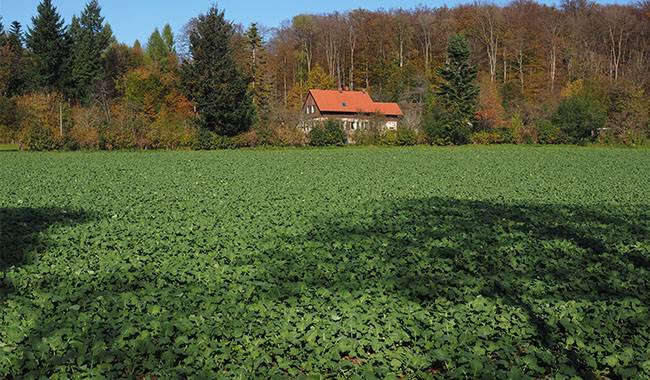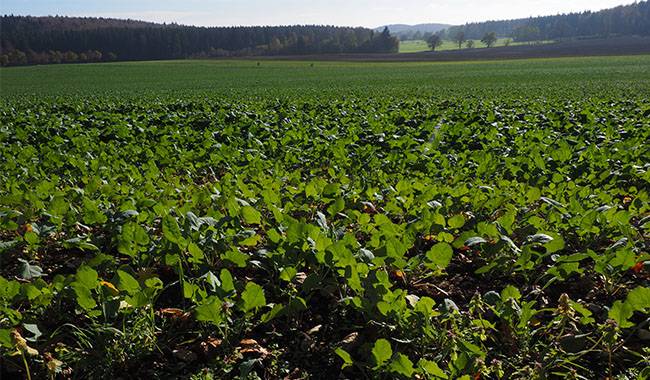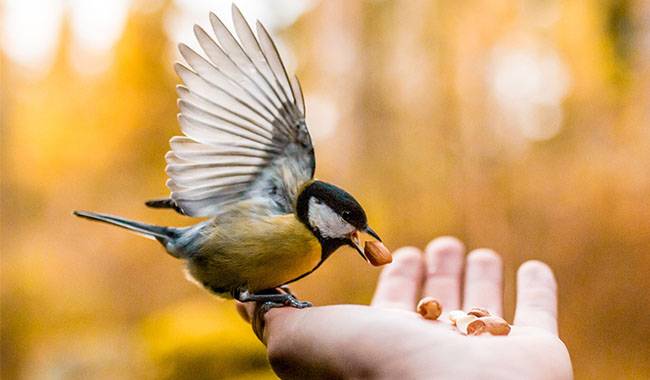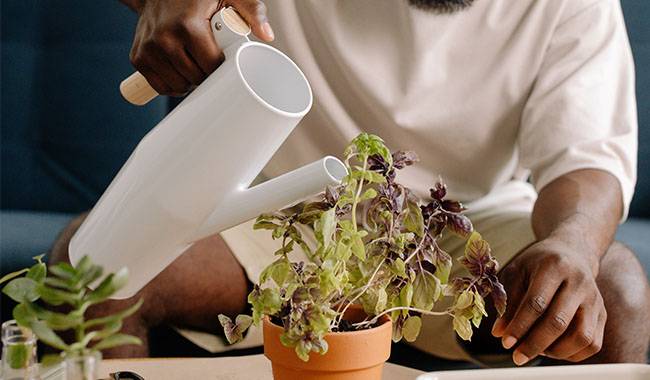
The scourge of the novice gardener is the rapid decline in soil structure and fertility. Carrot and beet roots became tasteless, tomatoes became increasingly diseased, yields and fruit quality declined, onions rotted in winter, and so on. To maintain high yields of vegetable products, gardeners began to intensify the use of fertilizers (often only minerals), herbicides, pesticides, and other chemicals. But these only temporarily increased the effective fertility of the soil, reduced the natural fertility, and continued to negatively affect the soil structure. Bedding plants are an important part of organic farming and can ensure high yields without chemicals. Our article is about what kind of green manure to sow in the fall and what green manure to use in the winter.
WHY IS THE FERTILITY OF THE SOIL DECLINING?
This happens because agricultural techniques are not followed.
- The soil becomes infertile due to the removal of the same elements by cultures that have been growing in the same place for a long time.
- It leads to the accumulation of pests and diseases affecting not a single crop, but an entire family (Solanaceae, Cruciferae, and others), which are grown in one place for several consecutive seasons.
- Systematic burning of crop residues significantly destroys soil organic matter and its structure. The reduction of organic matter leads to the sanding of the soil.
In order to stop the process of destruction of natural soil fertility, it is necessary to restore and continuously increase the amount of organic matter in the soil. This can be achieved by the following agronomic measures
- switching to permanent mulching of the soil with crop residues. For the mulch, use healthy fresh crops and weed residues (preferably unsown), straw, fallen leaves, humus, and compost.
- Manure (fresh and semi-decomposed), humus, bio-humus obtained through EM technology, vermiculture, and other methods are systematically applied during autumn tillage.
- Recently, the siddat technology, capable of improving soil structure, quality, and fertility (including natural ones) and significantly increasing the amount of organic matter in the soil in a short period of time, has been introduced more and more actively into agronomic practices.
THE ROLE OF GREEN MANURE IN SOIL FERTILITY
Green manure crops or green manures have proven to be effective ecological fertilizers. They are also referred to as green manures. In organic farming, the cultivation of siderata is the most effective and economical means of restoring soil fertility.
Siderata (weed-like) are individual crops or a mixture of plants, usually annuals, that develop a strong root system and fast-growing above-ground green mass. The green roots loosen the soil, especially the heavy component (loamy black soil), provide a large amount of organic residue, and the above-ground parts serve as a good snow control agent. They can be used as mulch or embedded in the soil as green manure after mowing.
SIDERATA USES
- For loosening the soil (rye, oats, rape, mustard, etc.)
- To disinfect the soil against scab, rot, and nematodes (mixture of green crop radish + rape + mustard with marigold, marigold, and oats)
- To improve fertility and loosen pasture soil (alfalfa, alfalfa, vetch, oat mixture, rye, mustard with legumes)
- for mulch (alfalfa, comfrey, fenugreek, and other green manures)
- to protect against returning cold fronts in spring (any cold-tolerant green manure)
- for pest control in the form of a mixture of flowering plants (marigold, marigold, lupine, purple crocus, clover). Their mixture of odors repels pests.
Siderata is an opportunity to balance all the necessary useful elements in the soil: nitrogen, potassium, calcium, phosphorus, and organic compounds.
Without earthworms, small insects, bacteria, and microorganisms, the soil would not become fertile. Green manure plants contribute to their appearance and create the most favorable living conditions.
One of the great advantages of these green manures is that they completely remove weeds from the garden bed. The carpet of sown green manure is so dense that even a small patch of weeds cannot germinate.
SOWING IN WINTER CONDITIONS
Mulch plants are sown at different times of the year: spring, summer, early fall, and winter. It is important not to allow green manure plants to mature, as they can then be classified as weeds. It is very effective to mow when the height of the upper part is 8-12 inches (20-30 cm) or during germination.
There are many benefits to sowing green manure during winter.
- It frees up time when sowing and planting early vegetable crops (early cabbage, carrots, early potatoes, and others) in the spring.
- extending the time green manure remains in the soil (until May) helps the plant’s root system to better loosen the soil and release additional mineral salts needed for later crops in the rotation.
- The rich green mass is a good shade from the hot spring sun and the returning cold, and after mowing, it can also be used as a mulch.
WINTER SOWING TECHNIQUES FOR GREEN MANURE

Depending on the size of the seeds, grass seeds are sown at a depth of 1-2 inches (2.5-5 cm). Seeds are sown densely. The denser the seeds, the better.
- Winter sowing is done more often by scattering and by row sowing in furrows between future cultivation rows.
- Winter sowing of green manure is done after the final harvest of the crop.
- Thoroughly clean any disease traction and weeds.
- If the soil is very poor, apply molybdenum nitrate or phosphorus and potassium fertilizer at a rate of 30-40 g/11 sq ft.
- If necessary, turn it over 8-10 inches (20-25 cm). If not tilled, weeds should be removed from the area by shallow tillage.
- If the soil in the 2-4 inch (5-10 cm) layer is very dry, water it before sowing green manure.
- Green manure should be sown twice after the early harvested crop. The first fall sowing takes place in August, and crops with a short development period (beans, peas, barley, etc.) are sown. The above-ground parts are trimmed at the height of 8-10 inches (20-25 cm). The cuttings are incorporated into the soil, where they can decompose before the onset of cold weather. The decomposition of the young green matter releases sufficient quantities of mineral salts and, at the same time, enriches the soil with organic matter.
- During the overwintering period, the second sowing of early crops and the main sowing of late crops, wintergreen manure (Sweet clovers, vetch, winter rye, etc.) is spent in the period from the 2nd-3rd decade of September to the 1st decade of October. Sedum has time to develop a good root system and form above-ground parts 2-4 inches (5-10 cm) or taller before the winter cold. Sometimes the seeds are sown late, and the culture does not have time to form above-ground parts in the fall. It will regrow very quickly in the spring. The above-ground portion formed in the fall acts as a snowpack in the winter to prevent wind erosion, while in the spring, the spreading green manure prevents evaporation of water and keeps the soil moist.
In the spring, the wintergreen manure is tilled into the soil before planting or sowing the main crop. It is very important not to over-saturate the soil with the green matter when laying sod. The useful microbiota is depleted on acidified soils, and the green matter cannot be processed in time by the useful microbiota. Crop residues become acidic and begin to rot in the soil (you can smell the decay). It is best to store some of the plugs for composting and incorporate the rest into the soil on such soil.
If the grass seed is sown in one piece, leaving the cuttings on the soil surface is best. Mulched soil will allow roots to decompose more quickly in the soil. 2-4 weeks later, early crops can be planted or sown.
In the case of row sowing, the above-ground portion is cut in the spring, dumped between the rows, shallowly incorporated into the soil, and the main vegetable crop is planted or sown in these rows 2-3 weeks later.
GREEN MANURE CROPS FOR WINTER SOWING
The choice of green manure plants or mixtures depends on the quality of the soil and the main crop in the vegetable rotation. When selecting green manure crops, they should not be sown in the same family as the main crop. For example, use a cruciferous crop, such as colza or rape, as green manure for cabbage (also in the cruciferous family).
It is necessary to select green crops in advance, depending on the impact on the soil and the main crop.
For potatoes, tomatoes, cucumbers, zucchini, eggplant, bell peppers, rye, oats, lupins, oil radish, mustard, and Common bird’s foot are good green manure precursors.
For beets, carrots, and beans, mustard, bitter greens, oil radish, rape, peas, and vetch are the best. They help loosen heavy, bunched-up soils and suppress weeds. They provide sufficient nutrients for plants from the mineralized matter of green manure.
Green manure groups that protect the soil from viral and bacterial decay and some pests include vetch-oat mixtures, oilseed rape, legumes, phacelia, and ryegrass annuals. They are good loosening agents for heavy soils and excellent precursors for cucurbits (zucchini, cucumbers, squash) and eggplant crops (tomatoes, bell peppers, eggplants).
When using green manure such as mustard, oil radish, marigold, and golden lotus, the soil will be effectively cured of iron nematodes and nematodes.
In loose soils and areas with erosion processes, any cruciferous crop gets good results, forming deep branching root systems (phacelia, bittercress, rape, radish, mustard). At the same time, they are good precursors for potatoes, corn, and winter crops.
They are recommended as green manure plants on excessively wet soils, which require high moisture (lupins), and on dry soils – drought-resistant (rape, bittercress, fenugreek).
On soils poor in organic matter, which require increased amounts of nitrogen and other nutrients, the best green manures are leguminous crops (vetch, alfalfa, peas, fodder beans), cruciferous (winter rape, winter slope), cereals (rye, oats). The above crops in no way limit the use of other crops or their mixtures as green manure. The main thing is to give priority to the use of green manure in the rotation of vegetable crops.
More Related Information About Gardening Beginners







